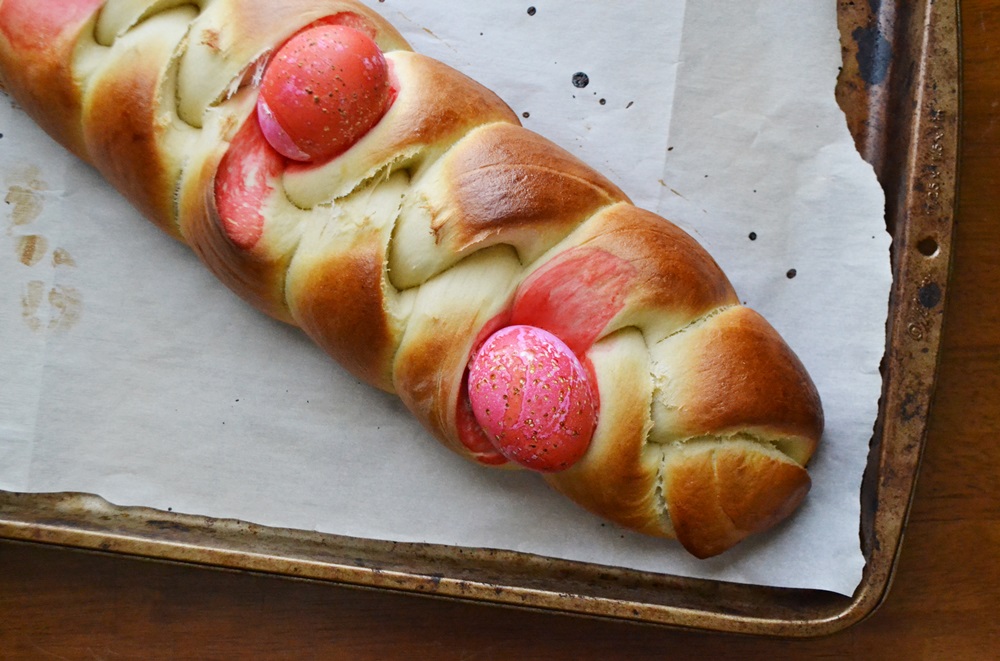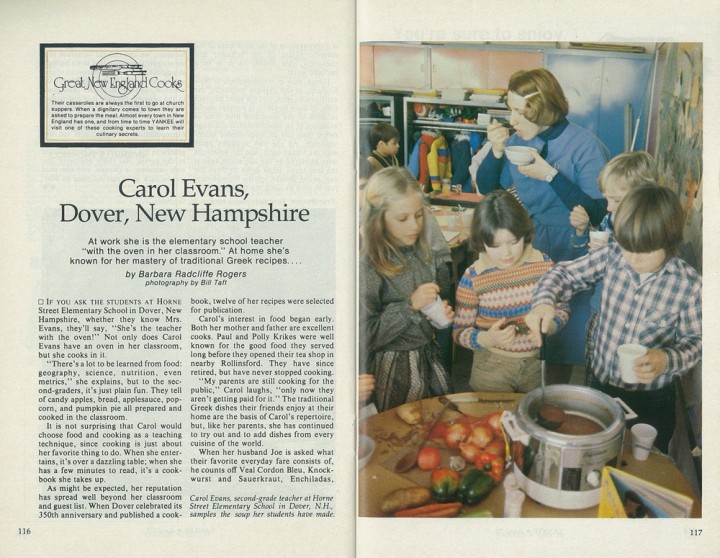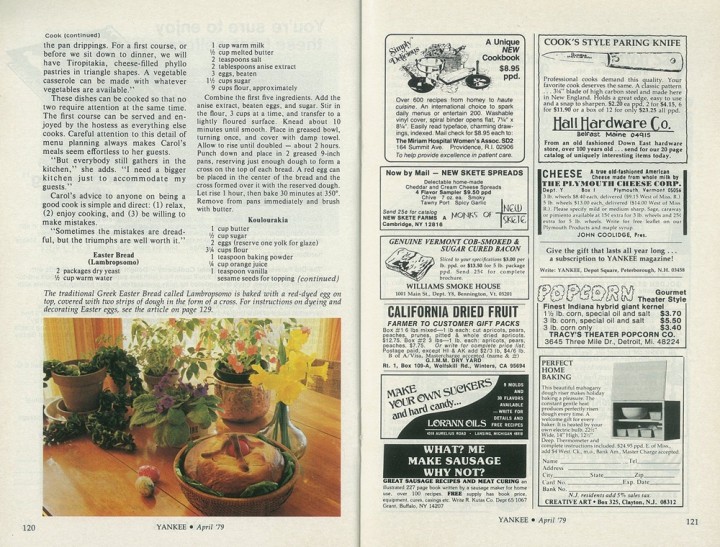Greek Easter Bread | Yankee Recipe Archives (1979)
Symbolic and sweet, Greek Easter Bread (Lambropsomo) is easy to spot thanks to its signature red eggs. Here’s a favorite recipe.

Coffee By Design | Portland, Maine
Photo Credit : Katherine KeenanI recently revisited a 2013 post on sweet Italian Easter Bread with dyed eggs tucked right into the dough before baking. When we shared the recipe on the Yankee Magazine Facebook page, we heard from many folks that shared how they grew up with similar breads at Easter, only they were Russian, Portuguese, Greek, and maybe even a few others. This was no surprise, of course –special (and often similar) breads are common in religious ceremonies and holidays – but curious to see if we had another Easter Bread in the Yankee recipe archives, I did some digging. The result? This Greek Easter Bread (Lambropsomo) recipe from April, 1979!
While some Greek Easter Bread recipes are flavored with lemon or orange zest, this one called for anise extract (my favorite).
Before we go any further, I do need to apologize for the pink eggs. Greek Easter Bread is known for its eggs, which are supposed to be a deep and brilliant red to symbolize the blood of Christ, but even with a good 10 minute bath in the red dye (made from the tablet you get in the cardboard egg dye kit at the supermarket), my eggs clearly looked more pink than red. A little online research showed that many supermarket eggs today are (allegedly) treated with a coating on the shells to deter moisture. It doesn’t affect the egg inside, but does apparently keep the dye from doing its job. If you want deep, vivid eggs this Easter, track down a fresh batch of untreated white eggs from your local friendly farmer and find a good recipe for naturally-dyed eggs (we think ours are pretty good for some colors!). The heat from the oven also caused the dye to bubble and blister a bit, and the expanding dough left pink streaks where it had touched the eggs. Not the prettiest, but there you have it.
In this era of Yankee history, the food section was called “Great New England Cooks.” That month, we featured elementary school teacher Carol Evans of Dover, New Hampshire. Carol was especially known for her delicious Greek cooking, and one of the recipes she shared was for Lambropsomo, the official name for Greek Easter Bread.


Along with the bread, there are recipes for traditional Koulourakia cookies, cheese triangles (Tiropitakia), lamb with orzo (Giouvetsi), vegetable casserole (Briani), moussaka, and and lemon baked chicken. Carol explained some of the traditions that accompanied the food as follows: “On Holy Thursday, the bread is baked. Eggs are dyed red to remind us that the blood of Christ redeemed the world. The egg itself is the symbol of the resurrection. These red eggs are baked into the Lambropsomo. We also bake the Koulourakia then. No cooking is done on Good Friday.”

Photo Credit : Aimee Seavey
Now, you’ll see that Carol’s bread in the photo doesn’t look like mine – it’s one large loaf baked in a 9-inch dish. All I can say is that I was in the mood to braid some dough (it’s a lot of fun), and many of the recipes I’d seen online were braided, so I detoured from the original instructions, cut the recipe in half, and just made one long braid. I also didn’t realize that I had forgotten to set aside the small amount of dough to make the crosses until it was too late. Ah, well.
The result? This bread smelled wonderful and tasted good, but it didn’t really want to rise, so it was a bit heavy. It’s entirely likely I did something wrong, but if I were to make it again I’d follow a tip I learned from King Arthur Flour by making a “quick starter” of flour, yeast and water. This extra step is helpful for recipes that are high in sugar, because they give the yeast a chance to get going on its own before the other ingredients are added. Maybe if I’d done that the yeast would have been a bit more willing to play nice. I’d also try and do a better job of getting the eggs truly red — this tutorial from The Kitchn using onion skins seems like a good (and fun!) place to start.
Have you ever had Greek Easter Bread? If you celebrate Easter, does your family have a favorite traditional dish? Let us know!
This post was first published in 2015 and has been updated.








I bake a Swedish cardamom coffee bread for both Christmas and Easter. This does not have the traditional eggs of other Easter breads, but is a sweet bread. I am firmly attached to instant yeasts which I get from King Arthur. The Gold Instant Yeast is designed for sweet breads and I mix it dry with the flour. It gives wonderful consistent results.